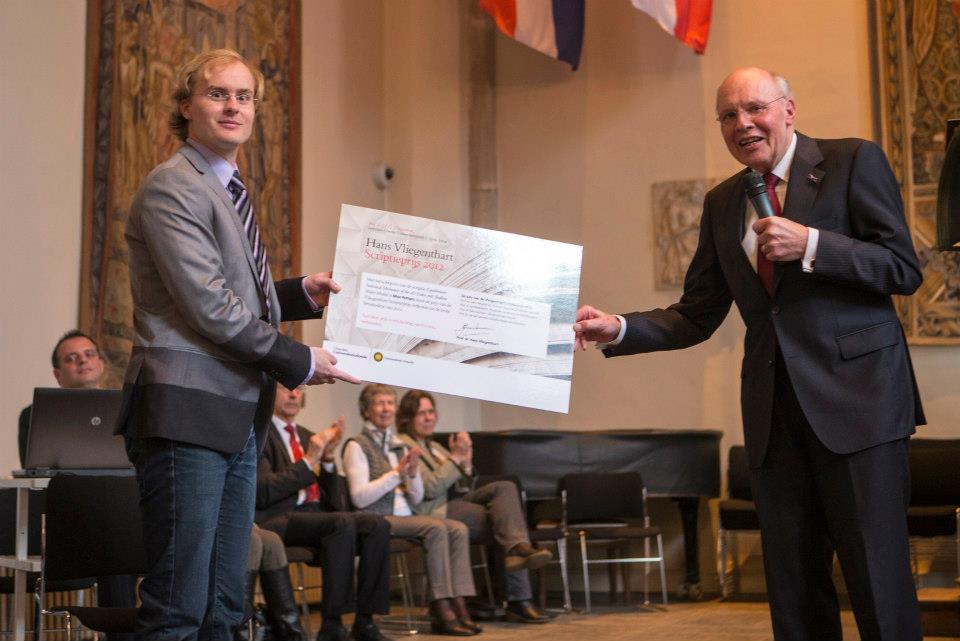April
2013: Max Potters awarded for his Master
thesis.

This year’s
category for the thesis award was in Science, including
Chemistry, Physics, Mathematics, Pharmacy, Biology and IT.
Students who passes their Master studies “cum laude” (GPA
4.0) were invited to send in their thesis. The thesis
grade must be above 8.0 (on a scale of 1.0 to 10.0, 10.0
being highest possible grade) in order to join the
competition.
This year
there were 21 students who entered the competition. In
February, the jury nominated 10 of the 21 thesis. On April
6, during the University Day, each of the nominees had to
give a two-minute presentation about their work.
At the
end,
Prof. dr. Hans Vliegenthart
(an eminent Dutch researcher) held a speech and told to
the audience that I won the award. This is what he said
(translation):
Max Potters performed his thesis research at the Ecole Normale Superieure de Lyon under supervision of dr. Freddy Bouchet, as part of his Mathematical Sciences and Meteorology and Physical Oceanography studies. His supervisors in the Netherlands were dr. Heinz Hanssmann and prof.dr. Henk Dijkstra.
The jury finds his thesis a beautiful treatment of the theory of geophysical flows. Statistical mechanics provides a good framework to study these flows, as was proved by previous studies. In his thesis Max describes - in an original and professional way – how this theory can be accommodated to support more complex flow models. Specifically, he showed how to apply the theory to the Shallow Water equations.
Next to theoretical achievements Max also created a special numerical Monte Carlo method with which he was able to simulate flows and observe them in a 'mathematical laboratory', so to speak. He found a phase transition which was not previously observed.
The thesis is beautiful. The theoretical and numerical work is thoroughly discussed and explained, and even though the theory is complex, his message remains clear. Furthermore, the work in the thesis is properly motivated, provides good illustrations, and has a handy index.
Even though the following has not influenced the decision of the jury, I do point out that a part of his research, about the two-dimensional Euler equations, has been published recently in "Journal of Statistical Mechanics: Theory and Experiment".